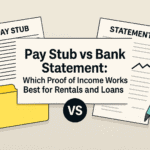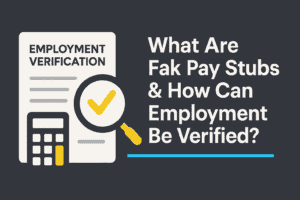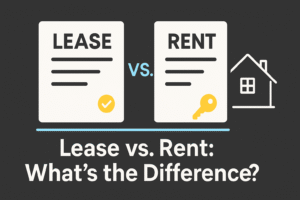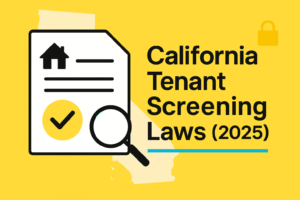Introduction: Document Automation and Cost Savings
By FinancialDocsProvider.com Editorial Team • Published: August 2025
Last updated: August 2025
If you handle income verification, bank statements, or tax packs across the US, UK, and Canada, you’ve felt the grind: manual edits, messy PDFs, and endless back‑and‑forth. Document automation tackles those bottlenecks by standardizing intake, fixing export issues, and packaging files the way underwriters prefer—often cutting total document costs by 30–50% through fewer touchpoints, fewer resubmissions, and faster approvals.
Our role is simple and strict: we organize, format, and enhance legibility. We do not fabricate numbers, dates, or parties. We help renters, car buyers, and business owners package information cleanly so decision makers can review it quickly and confidently. For sensitive proof‑of‑income packets, see our proof of income editing options (formatting and clarity only).
Related Entities & Terms
- W‑2, 1099‑NEC, 1040, IRS Transcript, SSA‑1099 (US)
- T4, T1 General, Notice of Assessment (NOA) (CA)
- Payslips, P60, SA302 tax calculation (UK)
- CFPB, FTC, IRS (US regulators)
- FCA, HMRC/GOV.UK (UK regulators/government)
- FCAC, CRA (Canadian regulators/government)
- Bank statements, deposit histories, payroll stubs
- KYC/AML, income verification, underwriting
- PDF/A export, OCR, e‑signature, redaction
Throughout this guide we’ll show where automation saves time, where human review is essential, and how compliance shapes every step.

Legality Basics: Formatting vs. Falsification (US/UK/CA)
It’s lawful to improve legibility, redact sensitive data, or fix export problems. It’s illegal to alter facts—amounts, dates, payees, account numbers, or official tax figures. Below is a high‑level orientation for the US, UK, and Canada. Always follow the rules given by your lender, landlord, or agency.
Allowed edits (examples)
- Redacting SSN/NINO/SIN except last 4/3 digits if requested
- Combining pages into a single tagged PDF
- OCR for searchability & accessibility
- Fixing page rotation, margins, DPI, or pagination
- Exporting to PDF/A; flattening layers to avoid rendering bugs
Illegal alterations (never allowed)
- Changing balances, deposits, or employer names
- Adjusting dates, pay periods, or tax year figures
- Inserting or removing transactions
- Forging e‑signatures or tampering with certificates
- Re‑creating bank/agency documents to impersonate originals
United States
For income verification, many reviewers request IRS transcripts. You can order them directly via the IRS “Get Transcript” service. If an underwriter needs a transcript, use official channels rather than screenshots or unverified summaries.
Resource: IRS — Get Transcript.
United Kingdom
Self‑employed applicants often provide HMRC SA302 and a Tax Year Overview. Employees typically share recent payslips and P60s. Use GOV.UK/HMRC sources for definitive copies; avoid retyping or re‑creating official forms.
Resource: GOV.UK — Self Assessment tax returns.
Canada
Landlords and lenders may request your CRA Notice of Assessment (NOA) and T4s. If asked for a “proof of income statement,” obtain it through CRA’s secure services to ensure authenticity and proper headers.
Resource: CRA — My Account (Individuals).
Allowed Edits (Safe & Lawful)
The best automation focuses on clarity, not content changes. Below are common, legal improvements that speed up reviews and reduce resubmissions.
Readability & Export Upgrades
- Consistent pagination & bookmarks: Add page numbers and section bookmarks (e.g., “Paystubs,” “Bank Statements,” “Tax Docs”).
- De‑skewing & rotation: Fix sideways or tilted pages so data columns align.
- PDF/A export: Archive‑safe exports eliminate “missing font” errors that stall underwriting.
- OCR cleanup: Convert scanned text so reviewers can search for employer names, totals, and dates.
- Color to grayscale: Downsample responsibly to reduce size without sacrificing legibility.
Redaction & Privacy
- PII minimization: Black out full SSN/NINO/SIN except the portion the reviewer requires.
- Selective redaction: Hide unrelated transactions (e.g., health or union dues) if allowed by the request.
- Header hygiene: Remove screenshots’ status bars, timestamps, or notification overlays that distract from the data.
Metadata, OCR & Accessibility
- Normalize metadata: Set document title, author (“Applicant”), and creation date to reflect the actual export process.
- Tag structure: Add reading order and tags for screen readers where feasible.
- Source labeling: Clearly label everything: “Issued by: Bank Name / HMRC / IRS / CRA” vs. “Applicant‑supplied paystubs.”
Need your monthly statements cleaned up so totals and running balances are crystal clear? Our bank statement formatting service focuses on layout, clarity, and packaging—never on altering facts.
Illegal Alterations (Never Do These)
Automation must never cross into fabrication. Any change that misrepresents facts can be fraud. That includes:
- Editing balances, deposits, withdrawals, or pay amounts
- Changing dates, pay periods, or employer/payee names
- Adding or deleting transactions or pages to create a false history
- Forging or overwriting e‑signatures and digital certificates
- Re‑creating bank or government layouts to impersonate originals
Practical consequences may include immediate denial, blacklisting by a landlord or lender, clawbacks, and potential civil or criminal exposure. If you’re unsure, ask the reviewer what formats are acceptable and provide official transcripts where possible.
Use Cases & Mini‑Scenarios
The biggest savings come from fewer back‑and‑forth requests and fewer rejections. Below are common scenarios and how automation reduces friction.
Renters & Property Managers
Maya (Toronto): Her landlord asks for three recent pay stubs, 90 days of bank statements, and last year’s NOA. A quick intake form maps each request to a checklist, names files consistently (e.g., “2025‑05‑RBC‑Chq‑Maya‑Stmt.pdf”), and batches them into a single, bookmarked PDF. OCR makes the employer name and net pay searchable. Result: zero resubmissions, one clean upload.
- Automatically redact middle digits of SIN; leave last three visible if requested.
- Paginate and add bookmarks: “Paystub May,” “Paystub June,” “NOA 2024.”
- Compress to target size (e.g., <8 MB) without blurring totals.
Auto Loans & Lenders
James (Texas): The dealership’s lender wants two recent pay stubs, YTD totals, and 60 days of bank statements. His mobile app exports images at odd sizes and rotations. Automation standardizes DPI, corrects rotation, and fixes cut‑off margins. Bookmarks help the analyst jump directly to “Deposits > Payroll.” James receives a conditional approval the same day because the packet reads cleanly.
- Normalize page size (US Letter, A4) and orientation.
- Flag math‑mismatch risks (e.g., YTD vs. pay frequency) for the applicant to correct with employer HR, not in the document.
- Bundle PDF/A with a front sheet summarizing what’s included and dates covered.
Small Business & SBA‑style Reviews
Nora (California): Applying for a working‑capital line, she’s asked for six months of business statements, three months of personal statements, last year’s 1040, and payroll reports. Her bank exports CSV and PDF; payroll exports PDF with dynamic sections. Automation merges, labels (“Business Checking — Deposits,” “Payroll Summary”), and OCRs the lot. Where a transcript is needed, Nora uses the IRS pathway rather than a screenshot. The reviewer sees a complete, coherent trail in one file.
- Use official channels for tax transcripts and authorizations.
- Clearly separate personal vs. business accounts and label EIN vs. SSN.
- Provide month‑end statements (not mid‑cycle screenshots) unless specifically requested.
W‑2 vs. Self‑Employed Packets
W‑2 employees: Typically share two to three recent pay stubs, W‑2, and 60–90 days of bank statements showing payroll deposits. Add employer name and pay period to the file names to reduce questions.
Self‑employed: Expect to provide 1099s (US), SA302 and Tax Year Overview (UK), or T4/T1 and NOA (CA), plus business bank statements. If a reviewer requests proof of continuity (not just a single spike in income), include rolling 6–12 months of statements with a quick cover summary.
How We Work (Intake → Delivery)
Our process balances automation with expert review. You keep control of your data; we keep our guardrails.
1) Intake
- Simple form collects the request, the reviewer’s instructions, and timelines.
- We ask for originals whenever possible (native PDFs, direct downloads from banks/tax portals).
- We confirm what can be redacted and what must stay visible.
2) Reconciliation
- We map documents to the checklist (e.g., “3 months statements,” “2 pay stubs,” “NOA”).
- We flag gaps or inconsistencies for you to resolve with employers/banks—never inside the document.
3) Formatting
- Standardize DPI, page size, rotation, and contrast; apply OCR.
- Create a single, bookmarked PDF with clear section labels.
- Apply redaction rules; export to PDF/A; normalize metadata.
4) Delivery
- Turnaround: same‑day rush (limited), 24–48 hours standard for typical packets.
- We provide a cover sheet summarizing contents and date ranges.
- We never alter factual information; any corrections must come from the official source.
Curious about timing, file options, or hand‑offs? Learn more about our process.
Quick Compliance Checklist
Use this to cut revisions and speed decisions:
- ☑ Provide originals (direct downloads from banks/tax portals) when possible.
- ☑ Match the request exactly: number of months, pay periods, forms, and date ranges.
- ☑ Redact only what’s allowed (e.g., show last 4 digits if requested).
- ☑ Keep totals and YTD figures visible and legible.
- ☑ Export to PDF/A; ensure OCR is complete; verify bookmarks.
- ☑ Use consistent file names:
YYYY‑MM‑Issuer‑Type‑Name.pdf. - ☑ Include a one‑page cover summary listing documents and time frames.
Packaging Tips
- Bundle logically: Paystubs → Bank Statements → Tax Docs → Cover Sheet.
- Check page order (chronological is easiest to follow).
- Keep file size manageable (aim <8–10 MB unless guidance says otherwise).
- Validate that links, e‑signatures, and QR codes still work after export.
Red Flags that Trigger Rejections
- Math mismatches: YTD totals don’t match pay frequency.
- Typography tells: Inconsistent fonts, kerning, or spacing within the same line.
- Metadata anomalies: All pages show the same creation timestamp despite spanning many months.
- Rendering artifacts: Blurry totals, jagged lines, or over‑compressed scans.
- Missing bank headers: Statement lacks institution logo, address, or standard footer.
- Broken e‑signatures: Tampered digital certificate warnings.
- Cut‑off margins: Cropped routing/account numbers or footer disclaimers.
- Out‑of‑range dates: Statements don’t cover the requested time frame.
Helpful Resources
Official sources for obtaining pristine originals:
Want to understand deliverables and timeframes? See our pricing and services overview.
FAQs
How does document automation cut costs by 50%?
Most savings come from fewer resubmissions and faster reviews. Standardized intake, OCR, and PDF/A exports reduce back‑and‑forth emails, re‑exports, and second looks. For many teams, that cuts total labor by 30–50%, especially when you combine automation with expert QC.
Is it legal to edit my financial documents?
Yes—if you’re improving formatting and legibility only. It’s illegal to alter facts such as amounts, dates, payees, signatures, or account numbers. When in doubt, provide originals (IRS transcripts, HMRC SA302, CRA NOA) from official portals.
What file types do you support?
Native PDFs are best. We also handle common image formats (JPG/PNG) and convert them into tagged, OCR’d PDF/A with proper pagination and bookmarks.
How fast can I get a completed packet?
Typical turnaround is 24–48 hours for standard requests, with limited same‑day rush. Complex or high‑volume requests may require a custom timeline.
What do you need from me to start?
The reviewer’s instructions, time frame, and original documents from banks/tax portals. Tell us what can be redacted (e.g., show only last 4 digits). We’ll handle the formatting and packaging.
Contact & Next Steps
Learn more about our process or review our pricing. When you’re ready, reach out.
Need accurate, reliable financial documents fast? Contact FinancialDocsProvider.com now.







Add comment